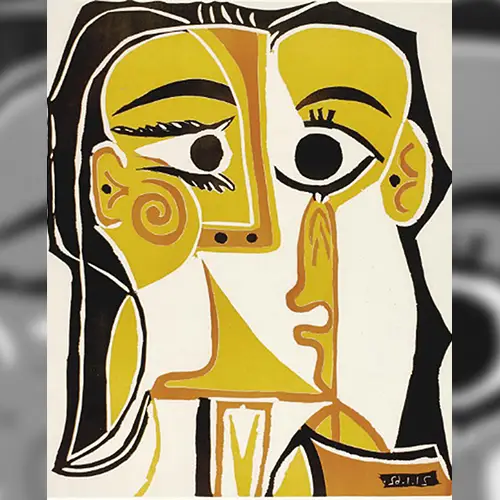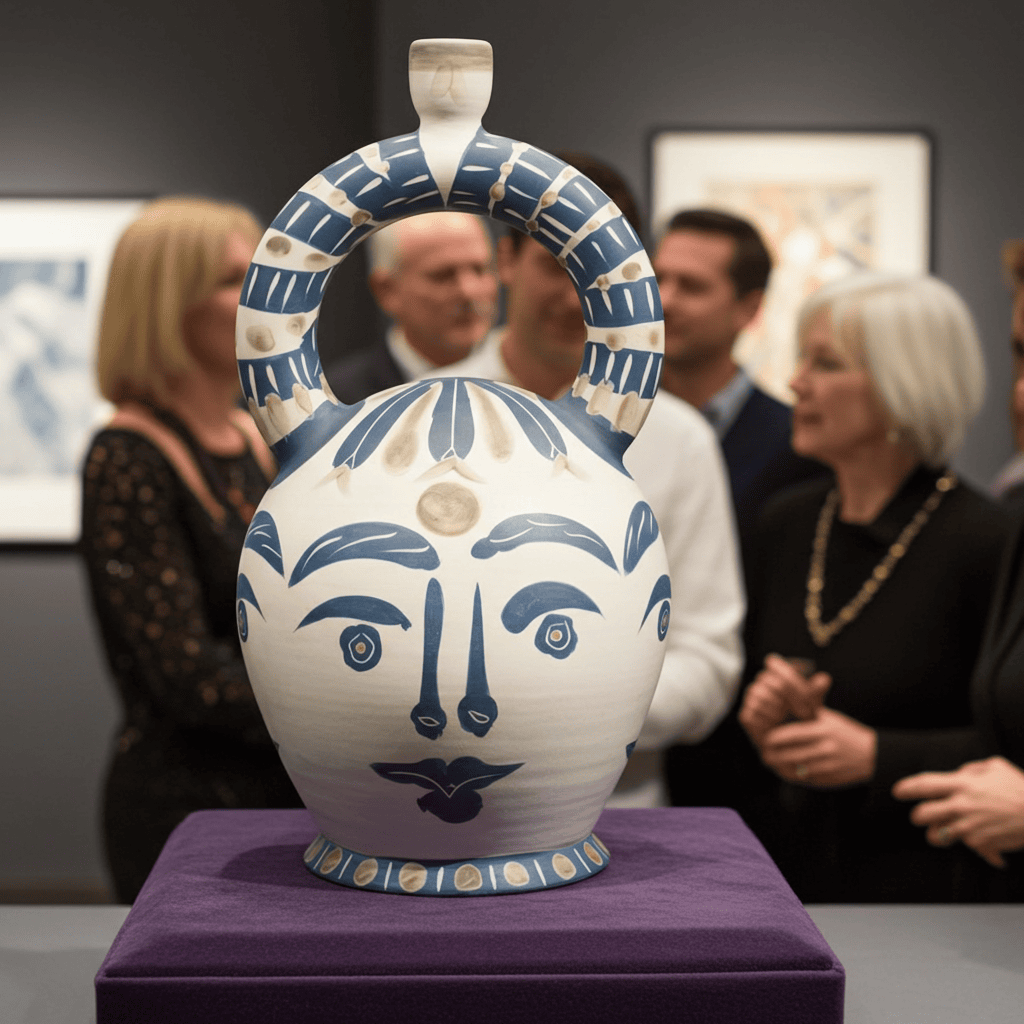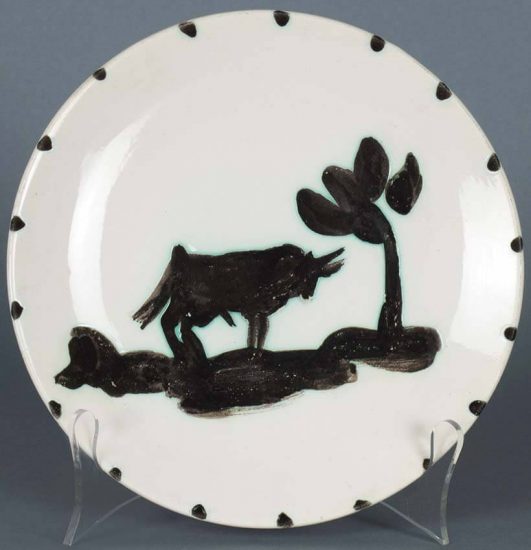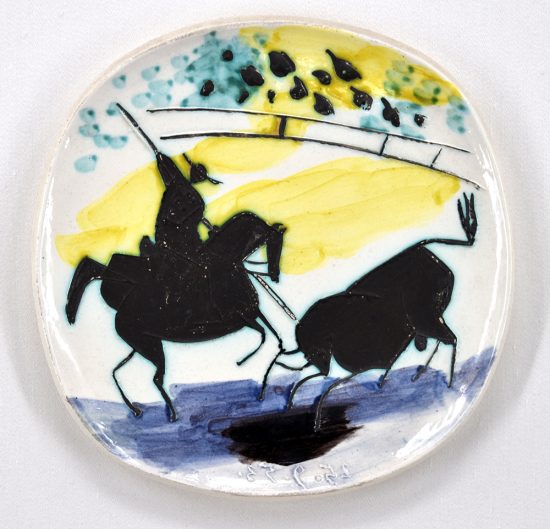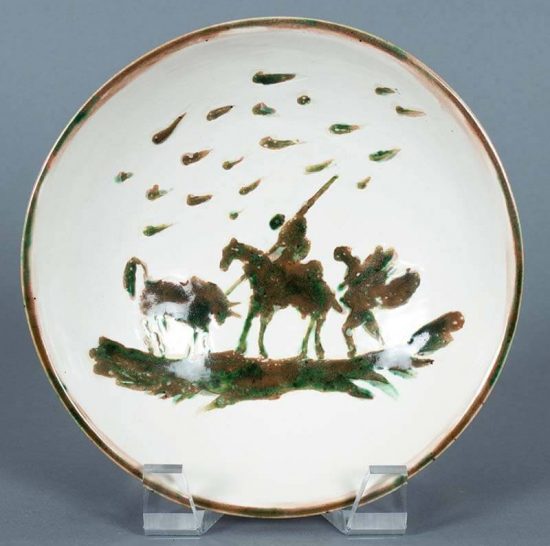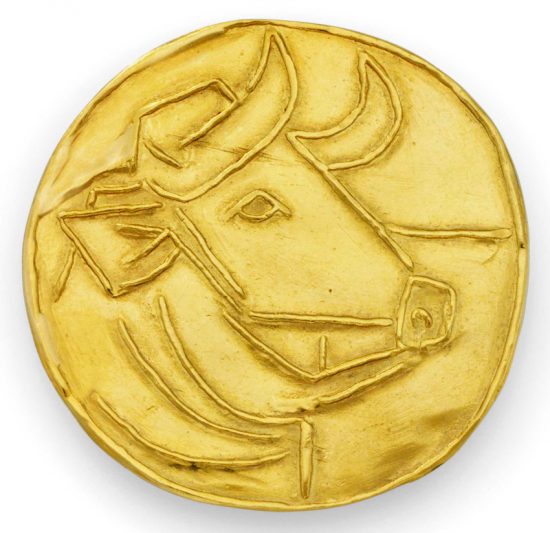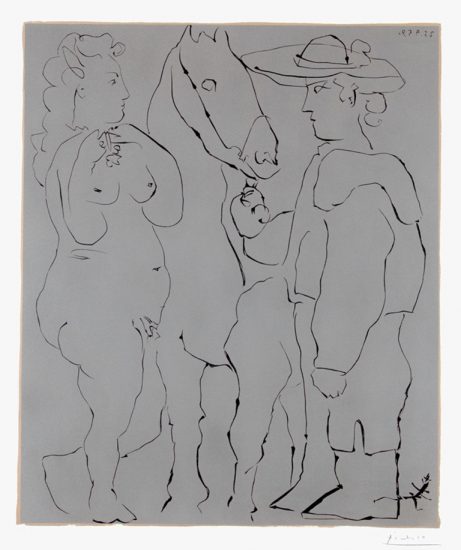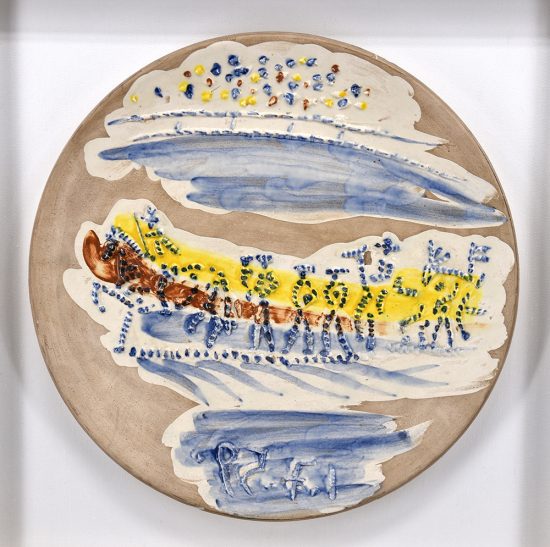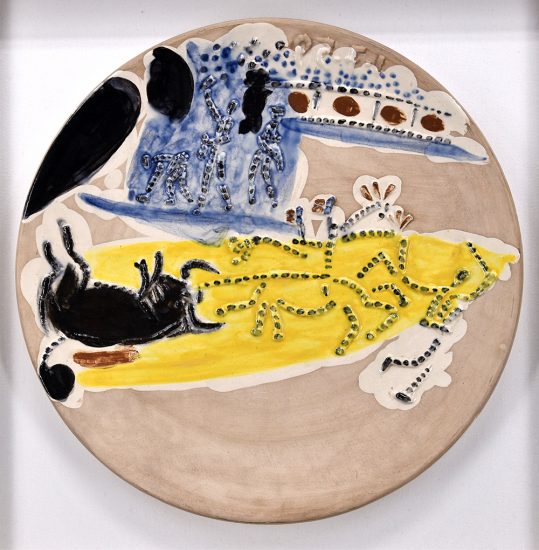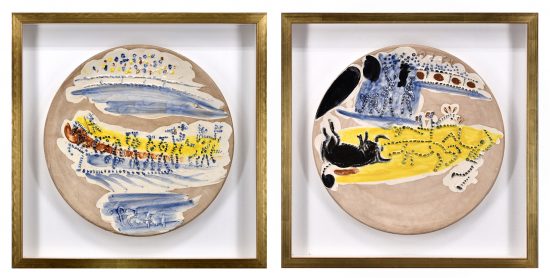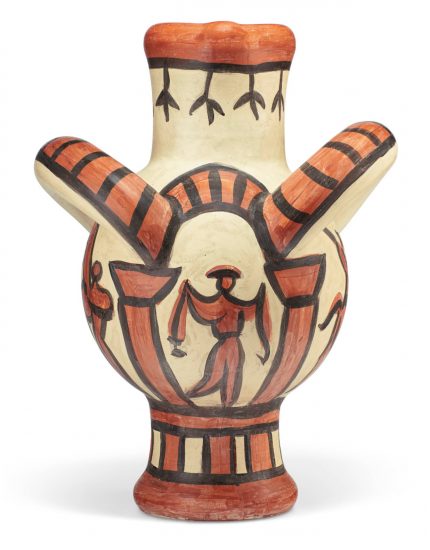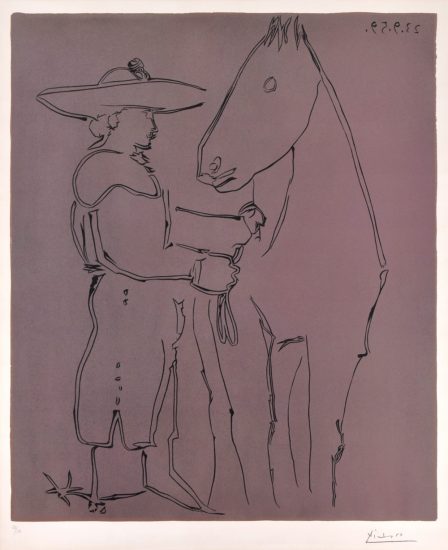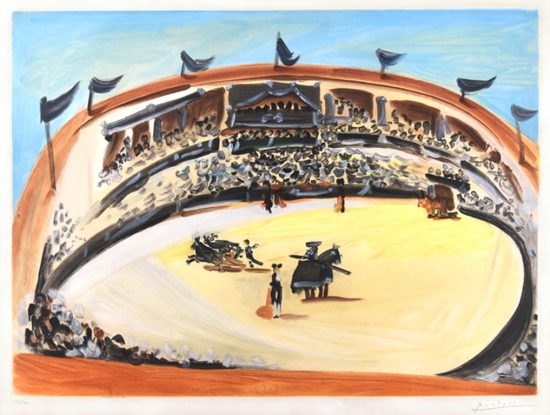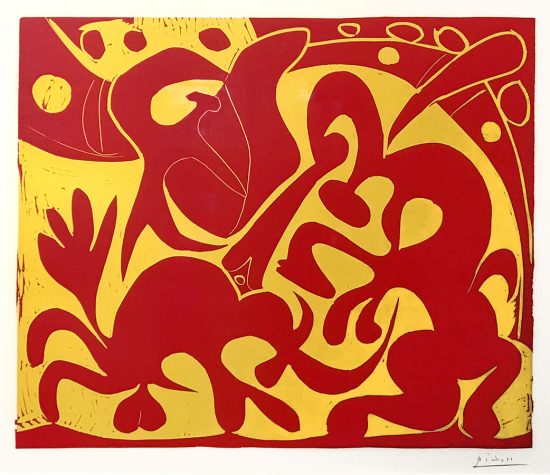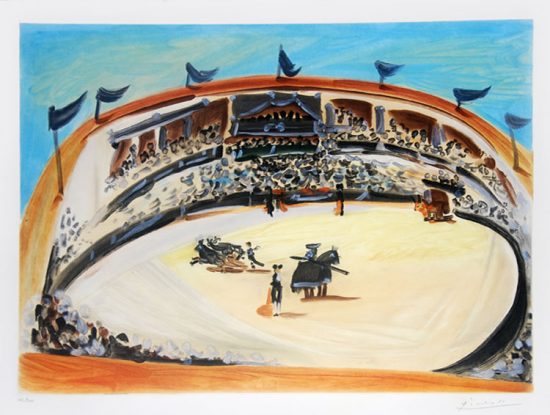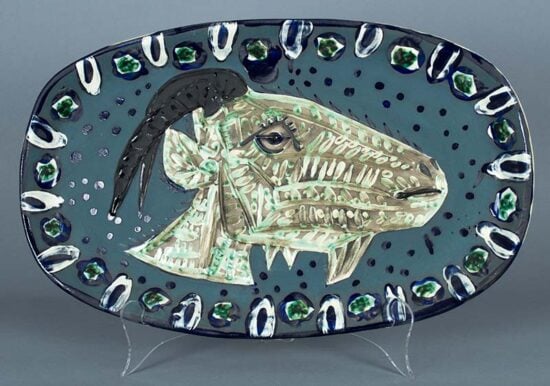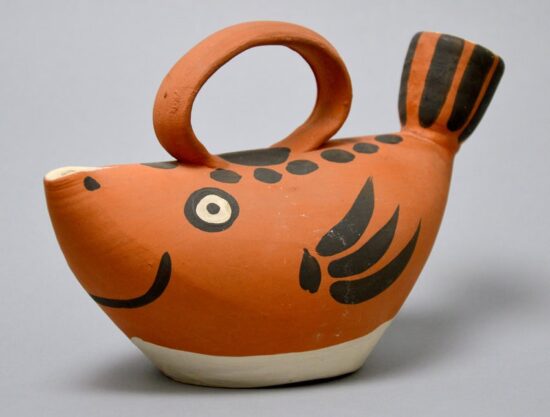Pablo Picasso’s Bulls as a recurring symbol is deeply intertwined with his Spanish heritage, personal identity, and exploration of timeless themes such as power, struggle, and mortality. The bull, a potent emblem in Spanish culture—central to the tradition of bullfighting—became for Picasso a complex figure embodying raw strength, virility, and the elemental forces of life and death. Throughout his career, from early works to late masterpieces like Guernica, the bull oscillates between a majestic, almost mythic presence and a symbol of brutality and sacrifice.
Picasso’s bull is never merely a literal animal; it is a shape-shifting icon that reflects his evolving artistic concerns, from the raw physicality of form in his early studies to the fractured, anguished figure in his anti-war statements.
The bull’s powerful symbolism allowed Picasso to probe questions of human nature, resilience, and destruction, making it a central motif through which he communicated both personal and universal narratives.

Throughout his prolific career, Pablo Picasso employed a remarkable range of artistic techniques to depict the bull, each method revealing new facets of this enduring symbol and showcasing his relentless innovation. In his early works, such as charcoal sketches and paintings from his Blue and Rose periods, Picasso rendered bulls with a naturalistic sensitivity, capturing their muscular form and raw power through careful shading and anatomical precision. Moving into his Cubist phase, he fragmented the bull into geometric planes and multiple perspectives, dissolving its physicality into abstracted shapes that challenged traditional representation and emphasized conceptual complexity. In the mid-20th century, Picasso explored lithography and etching, using bold lines and stark contrasts to distill the bull’s essence into symbolic, graphic forms—most famously in the 1945 Bull series, where a single image is progressively simplified from a detailed bull to a minimalist icon, a masterclass in reduction and abstraction. Simultaneously, his ventures into ceramics and sculpture allowed him to transform the bull into three-dimensional forms, often playful and exaggerated, combining painted surfaces with tactile modeling to bring a new vitality to the motif. Across these diverse mediums—drawing, painting, printmaking, ceramics, and sculpture—Picasso’s bulls evolved from literal creatures into complex emblems of strength, sacrifice, and cultural identity, each technique reflecting his ceaseless exploration of form, meaning, and expression.
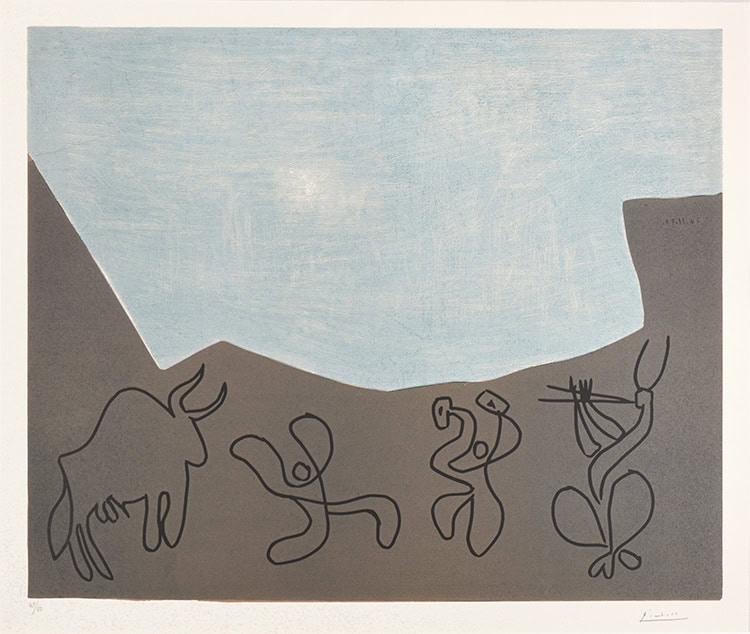
Was their a connection between Picasso’s bulls and his muses?
Picasso’s bulls—powerful, virile, and sometimes aggressive—can be seen as extensions or metaphors for his own masculinity and passionate nature, which were deeply intertwined with his relationships to the women in his life. His muses, such as Fernande Olivier, Olga Khokhlova, Dora Maar, Françoise Gilot, and Jacqueline Roque, each inspired different phases of his work, often marked by shifting emotional tones—from tender and sensual to tumultuous and intense.
In many paintings where bulls appear, the tension, energy, or mood of the bull sometimes parallels the dynamics Picasso experienced with his muses—whether it’s the raw power and dominance symbolized by the bull or the vulnerability and complexity of the human figure contrasted against it.
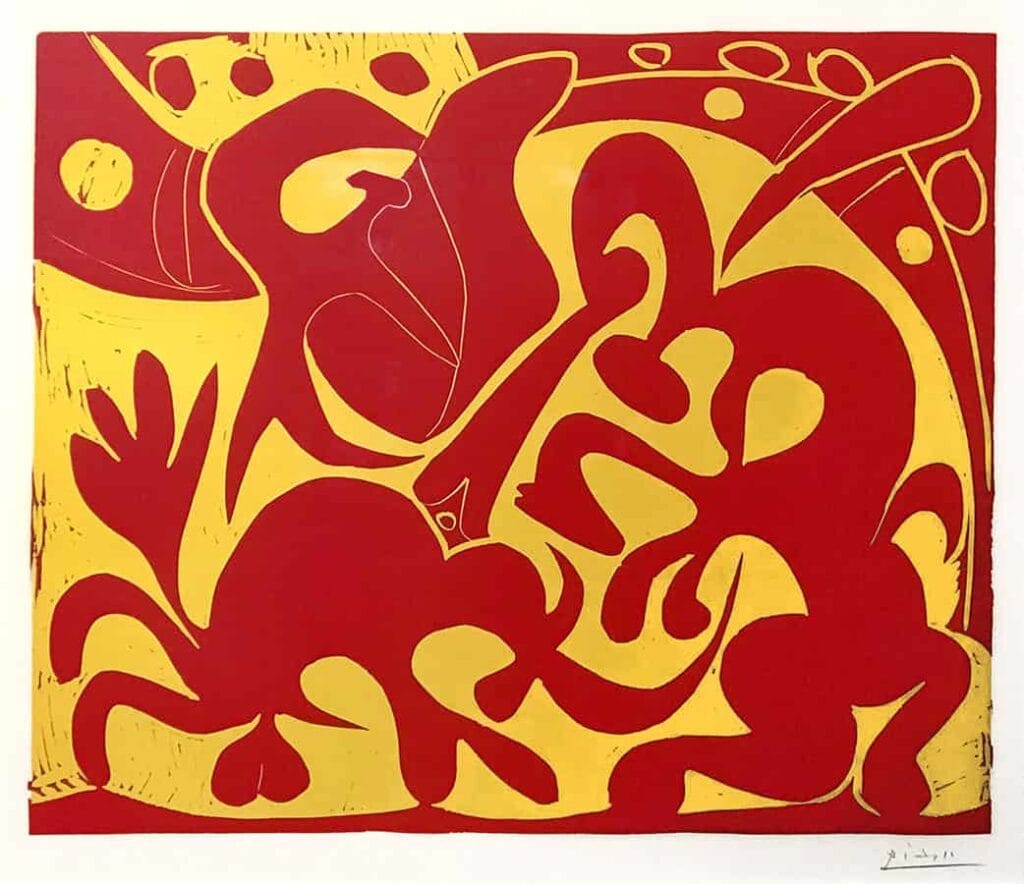
During the period with Dora Maar, the bull’s imagery often took on darker, more fragmented and anguished qualities, reflecting turmoil both political and personal. Meanwhile, with Françoise Gilot, some bull representations softened, echoing moments of renewal and playfulness.
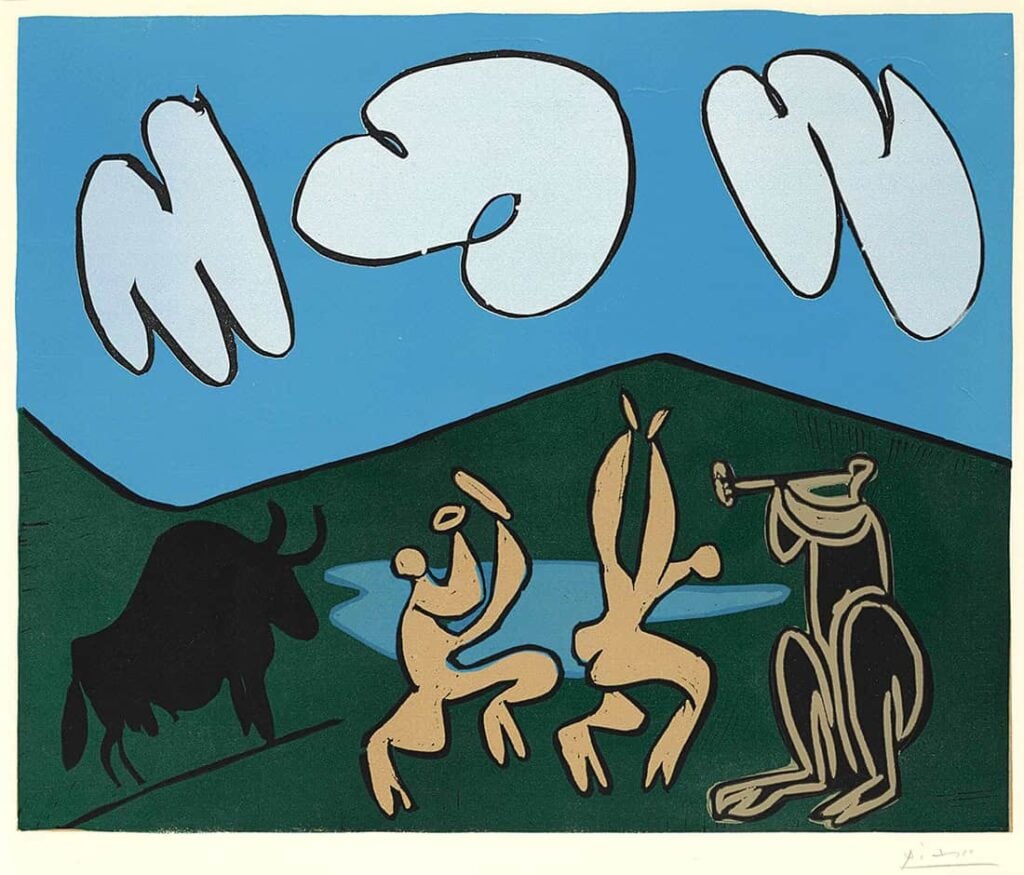
While Picasso never explicitly stated that bulls symbolized his relationships, art historians often interpret these motifs as part of a broader symbolic language where personal life, mythology, and cultural identity intertwine, making the bull a powerful emblem that resonates on multiple emotional and narrative levels within Picasso’s oeuvre.
Significant eras:
1. The 1945 Bull Lithograph Series
One of Picasso’s most studied explorations of the bull motif is his series of 11 lithographs created in 1945, often called The Bull or The Bull Lithographs. This sequence moves from a highly detailed, realistic image of a bull to an abstracted, minimalist line drawing, illustrating Picasso’s mastery of reduction and essence. It’s a profound meditation on form and perception, showing how an image can be distilled to its barest, most essential elements without losing identity. This series is frequently used in art education to demonstrate artistic process and abstraction.
2. Guernica and the Bull
Picasso’s monumental anti-war masterpiece Guernica (1937) features a bull prominently, and its symbolism remains widely debated. Some interpret the bull as a symbol of brutal force or fascism, while others see it as a stoic witness to suffering or a symbol of Spain itself. The bull’s ambiguous, almost ghostly presence adds to the painting’s haunting power, showing Picasso’s ability to imbue animal imagery with complex, multiple meanings. 3. Guernica and the Bull
4. Bulls in Ceramics and Sculptures
Beyond two-dimensional depictions, Picasso also transformed the bull into three-dimensional works, experimenting with ceramics and sculpture. His ceramic bulls often combine whimsy with power, featuring exaggerated forms, playful colors, and unexpected textures. These works reveal Picasso’s interest in tactile, functional art that still carried his bold symbolism.
5. Emotional and Personal Resonance
Art historians note that Picasso’s bulls sometimes reflect his emotional state or relationships at the time of creation. The bull’s aggressive or tender qualities can be read as metaphors for his own intensity, conflicts, or passions—making the motif both deeply public and profoundly personal.
Major Picasso Bull Exhibitions
1. Picasso. Bulls and Bullfighters – Museu Picasso, Barcelona
This comprehensive exhibition delved into Picasso's lifelong fascination with bullfighting, presenting over 100 works—including paintings, drawings, and prints—that span his career. It also featured rare personal documents, such as photographs of Picasso at bullfights and his correspondence with renowned bullfighters, offering a unique glimpse into his personal engagement with the art form.
2. Picasso: Bullfighting – Tel Aviv Museum of Art
Curated from the Museu Picasso's collection, this exhibition focused on Picasso's depictions of bullfighting, showcasing works from his early years in Málaga to his later years in France. It highlighted his evolving interpretation of the corrida, providing insights into how this theme permeated his artistic journey.
3. Picasso. Bullfight (1934) – Museo Nacional Thyssen-Bornemisza, Madrid
This exhibition aimed to present Picasso's most profound interpretation of the bullfighting world, exploring themes beyond the physical violence to depict the ritual as a parable of love and death. It offered a deeper understanding of Picasso's symbolic use of the bull in his work.
4. Picasso: The Bull – National Gallery of Art, Washington, D.C.
Focusing on Picasso's lithograph series Le Taureau, this exhibition showcased the progression of a bull's depiction from a realistic image to a minimalist abstraction. The series exemplifies Picasso's mastery in reducing complex forms to their essential elements.
5. Picasso and Bullfighting – Picasso Museum, Barcelona
Q&A: Intriguing tidbits about Picasso and his iconic Bulls
Bullfighting Passion — Picasso wasn’t just fascinated by bulls as artistic subjects; he was a lifelong aficionado of bullfighting, attending numerous corridas throughout his life. He often said that the bullfight was “the most beautiful thing in the world,” blending violence, drama, and ritual—a perfect metaphor for human conflict and passion.
The Bull and the Minotaur — Picasso’s fascination with bulls also led him to explore the mythological Minotaur, a half-man, half-bull creature. The Minotaur became a recurring figure in his work, embodying themes of duality, power, and vulnerability. He even referred to himself as a “Minotaur” at times, playfully embracing both the beastly and human sides of his nature.
Transformation Through Abstraction — The famous 1945 lithograph series The Bull started as a detailed, realistic bull but was reduced step-by-step to a simple line drawing. It’s rumored that Picasso kept challenging himself to remove more and more detail until the image was almost a single stroke—showcasing his belief that simplicity can capture the essence better than complexity.
Bull as a Personal Symbol — Some art historians speculate that the bull symbolized Picasso’s own virility and masculine identity. He sometimes signed works featuring bulls with a playful flourish, almost like a personal emblem.
Humor and Playfulness — Despite the bull’s powerful symbolism, Picasso often infused his bull imagery with a sense of humor. In some ceramic bulls, he exaggerated features or gave them whimsical expressions, reminding viewers not to take even the most potent symbols too seriously.
The Bull in Pop Culture — Picasso’s bulls have inspired everything from fashion designs to sports team logos—most famously, the Chicago Bulls basketball team logo is often linked to Picasso’s influence, though the designer has credited other inspirations.

Enjoy our collection of Pablo Picasso fine art of bull, bullfights, picadors, and toros.

